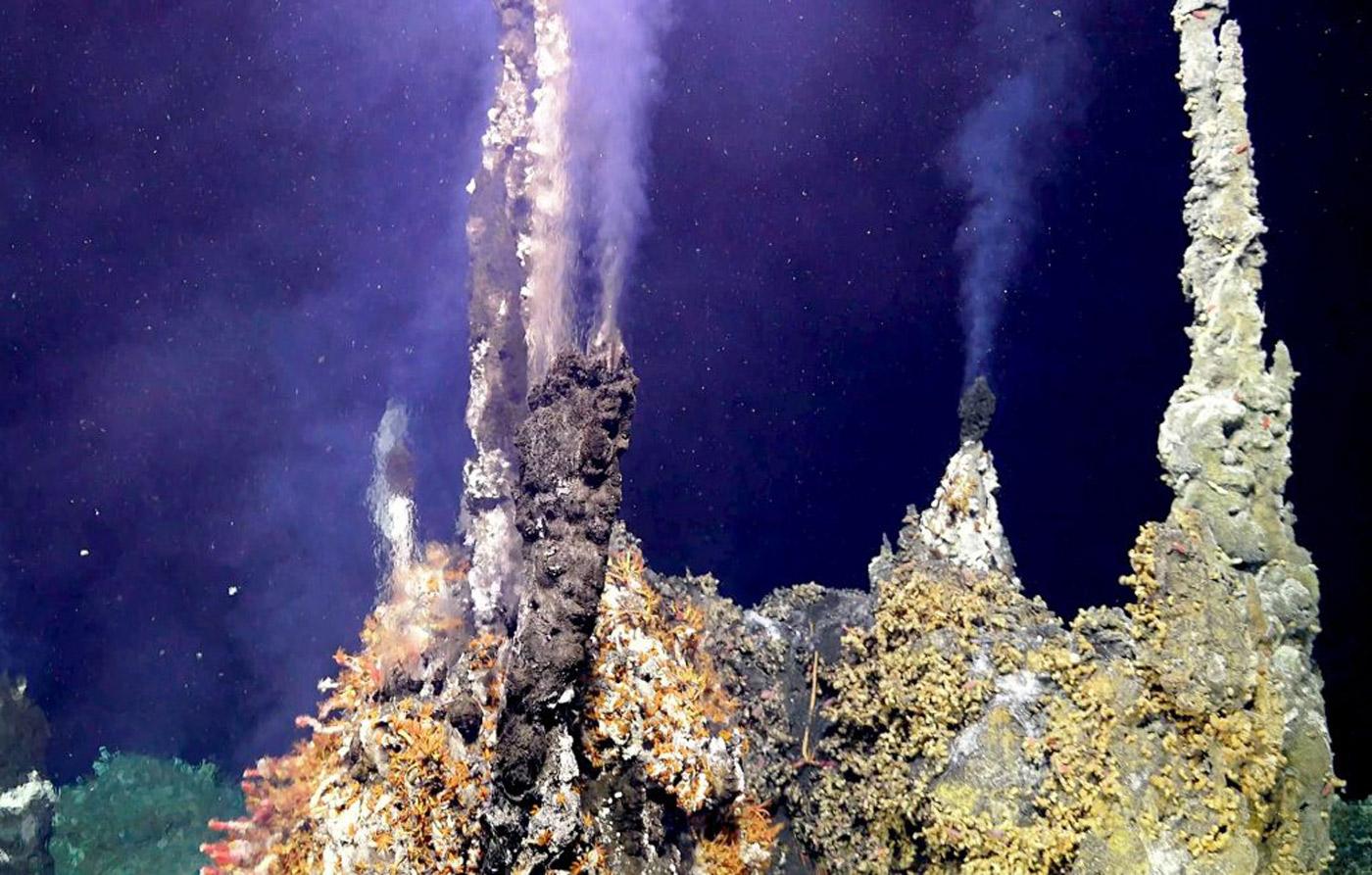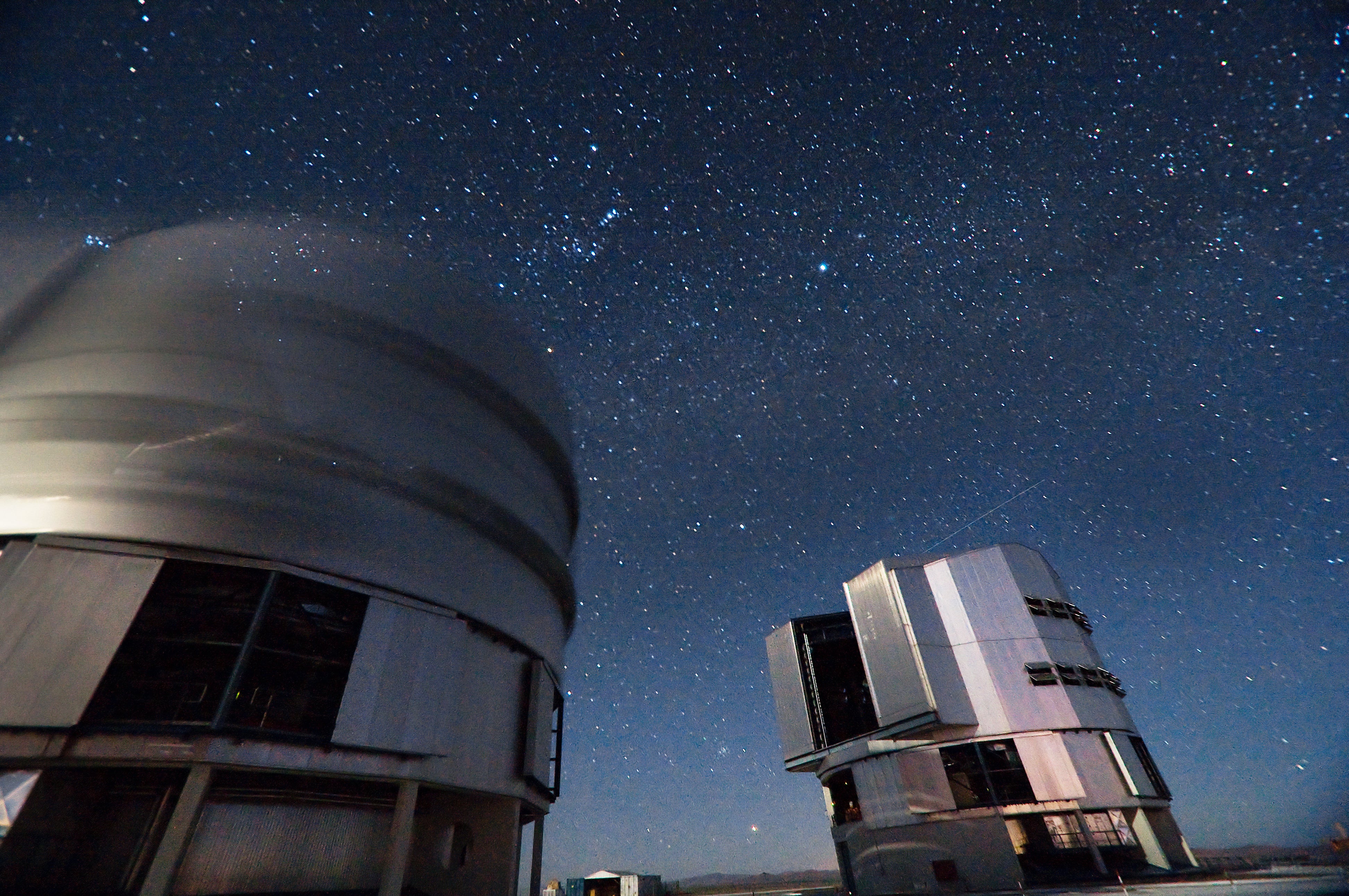
SETI Institute research scientist Pablo Sobron was one recipient of a NASA Planetary Science and Technology from Analog Research (PSTAR) grant. Sobron, along with his colleague Laurie Barge at NASA JPL, will study hydrothermal systems at an active underwater volcano about 300 miles west of Oregon. The project is dubbed InVADER (In-situ Vent Analysis Divebot for Exobiology Research) and will be used to develop technologies for autonomous exploration of ocean worlds. Sobron noted in a recent press release picked up by Space Daily:
"With InVADER, we bring next-generation space exploration tools 1,500 meters below the ocean surface," said Sobron. "This way, our project offers unprecedented opportunities to bridge studies of Earth's oceans and mission concepts to explore oceans in our solar system."
The InVADER project is an impressive public/private partnership involving scientists and engineers from several institutes to further scientific understanding of both Earth's oceans and those on other moons and planets.
- SpaceDaily: InVADER project to test technology for exploring ocean worlds
- Discover Magazine, Blogs: New SETI Project Will Practice Looking for Alien Life Near Deep-Sea Vents on Earth
- SETI.org: InVADER Project to send a Robotic Laser to Explore Deep Sea Vents
 UFO Government Secrets? SETI Institute CEO Weighs In
UFO Government Secrets? SETI Institute CEO Weighs InSenator and presidential contender Bernie Sanders appeared on the popular Joe Rogan Experience podcast for an interview centered primarily on pressing policy issues facing the American public. At the end of the discussion, Rogan asked Sanders if he would publicly disclose any government knowledge about extraterrestrials, should he become the next president of the United States. When he laughingly responded, “My wife would demand that I let you know," it caused a bit of a stir. Inverse turned to Bill Diamond, president and CEO of the SETI Institute, for comment on the notion that the government might hold secret knowledge of alien visitors:
“We think that there isn’t anything that the government could tell the people about any aliens who have visited or spacecraft that have crashed or things like that… We are all hoping that we're not alone, that's why we're looking," he said. "There are aliens out in space that we are, I think, quite confident exist somewhere, and then there's this idea of aliens visiting Earth, where I think we would say we are highly skeptical," he added.
Diamond explained why SETI Institute does not conduct investigations based on anecdotes of abductions or UFO sightings:
“None of these things — while interesting and fascinating — lends itself to scientific investigation or scientific rigor,” he says. “Science looks for things that can be reproduced, that can be studied and evaluated, that can be tested against hypotheses, et cetera.”
The idea that extraterrestrial beings could come all the way to Earth, without detection, only to crash in a field seems farfetched at best. “If that type of technology could be built and hidden, it would be very unlikely to crash on Earth,” Diamond noted. Keeping such occurrences secret from the entire world seems equally unlikely.
 Taking a Peek at our Closest Neighboring Star System
Taking a Peek at our Closest Neighboring Star SystemThe star system closest to our own, Alpha Centauri, is a tantalizing target for exoplanet research. In addition to being (relatively) close-by, the system features two stars resembling our sun. Either could potentially have planets orbiting within the habitable zone – the area around a star in which planets could sustain liquid water. A science initiative called Project Blue aims to capture the first image of an Earth-like planet in this system. Studying Alpha Centauri has been complicated. The light from nearby stars must be blocked to image a planet in visible light. With two stars to contend with, the challenge is that much greater. Fortunately, the distance between the two stars is increasing, which will allow telescopes to observe each star separately by 2020. Unfortunately, current technology is not yet precise enough, a challenge SETI Institute senior planetary astronomer, Franck Marchis, outlined to Scientific American:
"Imaging an exoplanet nearby a bright star is like trying to see a firefly nearby a lighthouse a few hundred kilometers away. In the case of Alpha Centauri, we have two lighthouses, so the problem is even worse," said Franck Marchis, a senior planetary astronomer at the SETI Institute and the science operations lead for Project Blue.
The impact such an image could have on space exploration is significant, Marchis explained:
“If we find that one of those planets is like our Earth, meaning it has continents and oceans, it will become a new, potentially living world at our doorstep… That will be a highlight of astronomy for the next century and possibly a way to expand the interest of our whole civilization for space exploration.”
- Scientific American: The Hunt Is On for Alpha Centauri’s Planets
- SETI.org: Project Blue and the Quest to Photograph Exoplanets
 Fermi Problems
Fermi ProblemsThe Fermi Paradox is well known to anyone with interest in SETI. It explores the contradiction between the estimates indicating a high probability that the galaxy is teeming with life and the disappointing lack of evidence so far. In short, if indeed we are not alone, where is everybody?
The Fermi Paradox is named after physicist Enrico Fermi, who had a penchant for estimation. Rather than obsessing over the precise accuracy, Fermi would challenge his students to develop the ability to solve problems with an estimate. This approach is a concept called “Fermi Problems” by Seth Shostak, the SETI Institute's Senior Astronomer. Quoted in a recent Curiosity article, Shostak emphasized the usefulness of making estimates in a world inundated with information:
"If we wish the public to be able to make smart choices about such issues as the relative dangers of football versus driving, how long will it take to burn away the entire Amazon basin, or whether it's safer to inoculate your child or not, we are fabulizing if we think that hearing the answers in a news report will suffice."
Rough estimates are accurate enough for making most choices and are a satisfying exercise as well.
- Curiosity.com: Fermi Questions Show How Ballpark Estimates Can Lead to More Precise Answers
- Edge.org: 2017: What Scientific Term or Concept Ought to Be More Widely Known?
- SETI.org: Fermi Paradox
In last week’s episode, explore the ecosystem that is your immune system in Granting Immunity. In our previous week’s episode, imagine the future with help from Hollywood in an encore episode of Sci-Fi From the Future.
Last time on Facebook Live, join the Frontier Development Lab Astronaut Health Team. Videos of all past Facebook Live events are on our Facebook page: https://www.facebook.com/SETIInstitute/





